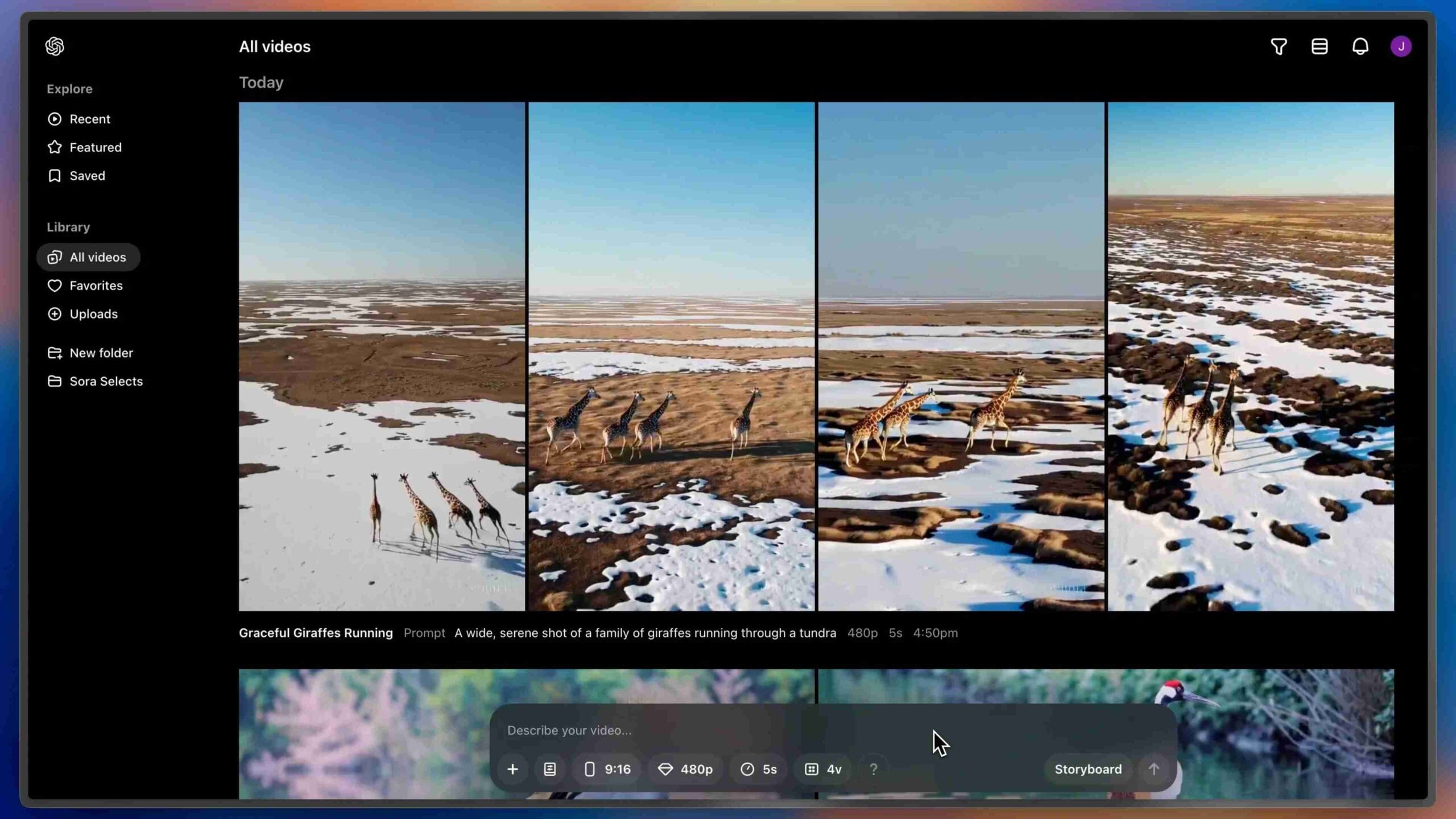OpenAI has officially released Sora, its text-to-video AI generator, marking a significant step in artificial intelligence development. The tool, which transforms written descriptions into video clips, is now available to ChatGPT Plus and Pro subscribers in the United States and most other countries, though notably absent from the UK and European markets.
“We hope this early version of Sora will enable people everywhere to explore new forms of creativity,” OpenAI stated in their announcement. The company has introduced Sora Turbo, a faster version of the model previewed in February, offering users the ability to create videos up to 1080p resolution and 20 seconds in length.
Now you can generate entirely new videos from text, bring images to life, or extend, remix, or blend videos you already have. We’ve developed new interfaces to allow easier prompting, creative controls, and community sharing: https://t.co/HMcAKwaCCw pic.twitter.com/gtMiFkT6GB
— OpenAI (@OpenAI) December 9, 2024
For everyday users, the practical implications are straightforward: ChatGPT Plus subscribers can generate up to 50 videos at 480p resolution monthly, while Pro subscribers ($200/month) get unlimited generations at higher quality and longer durations.
The technology isn’t perfect yet. Tech reviewer Marques Brownlee, who tested Sora early, described it as “horrifying and inspiring at the same time,” noting that while the tool excels at landscapes and visual effects, it struggles with basic physics – something everyday users might notice in their creations.
Safety concerns have shaped Sora’s rollout. Every AI-generated video includes visible watermarks and C2PA metadata to identify its artificial origin. OpenAI has implemented strict controls, limiting uploads of specific people and blocking explicit content. “We obviously have a big target on our back as OpenAI,” said Rohan Sahai, Sora’s product lead. “We want to prevent illegal activity of Sora, but we also want to balance that with creative expression.”
The launch hit a bump when some artists spoke out against OpenAI. These artists, who helped test Sora early on, went public with complaints that the company used them for free work and publicity. It shows how tricky things are getting between AI companies and artists who worry about their future.
Similar Posts
When it comes to keeping people safe from fake videos, OpenAI has put up some guardrails. They’re blocking harmful content like deepfakes that could trick people, and stopping any material that might hurt kids. But there’s a catch – as more people start using AI to make videos, it’ll get harder to spot what’s real and what’s not.
Right now, folks in Europe and the UK can’t use Sora. That’s because these places have strict rules about AI safety and data privacy that OpenAI needs to follow first. The company says they’re working on it and hope to bring Sora to these countries soon.
As this new technology becomes part of our everyday lives, understanding what’s real and what’s AI-made will become increasingly important for everyone. While Sora opens up new ways for people to tell their stories, we’ll all need to develop skills to identify AI-generated content in our digital world.







